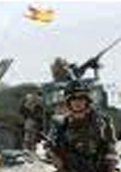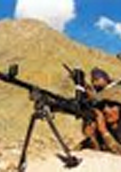US Strategy in Afghanistan and Regional Concerns
India should seek a regional solution to the Afghan conflict, involving a regional force under a UN flag to provide a stable environment for governance and development till the Afghan National Army can take over.
Salient Issues Affecting Defence Manpower in India
Manpower costs are increasingly becoming unmanageable and are driving national security planners towards thinking creatively about what used to be called ‘affordable defence’. Despite leap-frogging from third to fourth generation weapons technologies in the short span of about two decades, modern armed forces are still far from being able to effect substantive reductions in manpower by substituting fighting personnel with innovative technologies while ensuring operational effectiveness.
Strategic Stalemate in Afghanistan
Since the US and its allies have no additional troops to contribute for the fight against the radical extremist forces in Afghanistan, the net must be enlarged to include military contributions from Afghanistan’s regional neighbours, perhaps under a UN flag.
India’s Cold Start Doctrine and Strategic Stability
Cold Start is a good doctrine from India’s point of view, but one that could adversely impact strategic stability given since Pakistan’s nuclear strategy is premised on countering Indian conventional military superiority with a nuclear shield.
China’s Emerging Cyber War Doctrine
China will develop much greater depth and sophistication in its understanding and handling of information warfare techniques and operations. With Indian security becoming increasingly dependent on date processing and network centricity, it will become extremely vulnerable to such information warfare campaigns. India needs to adopt a multidisciplinary approach towards dealing with the emerging cyber warfare threats and develop appropriate response.












